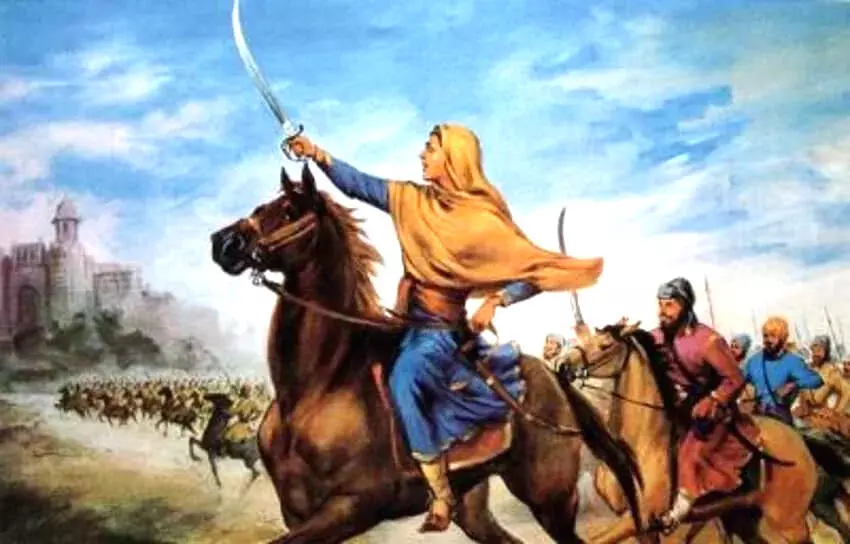Untold Story of India’s Women Warriors

Vijay Garg
Traditionally, across civilisations, women have not played a direct role in wars and battles. In early societies, the preservation and safety of women were seen as vital to the survival and continuity of communities. Yet history offers many powerful exceptions — women who defied convention and proved themselves as exceptional warriors.
Take, for instance, the Amazons, the legendary tribe of female warriors in Greek mythology, celebrated for their archery, riding skills, and battlefield acumen. Closer to home, the Rigveda mentions Vishpala, a warrior who returned to combat with a prosthetic leg after losing her limb in battle — a testament to resilience and courage. Indian tradition reveres Shakti, embodied as Maa Durga, the warrior goddess armed with weapons and mounted on a lion — symbolising feminine strength in its most powerful form.
In more recent centuries, figures like Mai Bhago Kaur and Rani Durgavati stood against the Mughal armies, while Rani Lakshmibai of Jhansi and Kittur Chennamma fought valiantly against British colonial rule. These women were not mere outliers — they were trailblazers whose legacies continue to inspire.
The participation of Indian women in the military began formally with their induction into nursing services under the British Indian Army. Thousands served with distinction during the World Wars. After independence, women were granted regular commissions in the Armed Forces Medical Corps in 1958. Since then, more avenues have gradually opened. In 1992, women were inducted into various non-medical branches of the Indian Army under the Short Service Commission. By 2008, they were eligible for permanent commission in the Legal and Education Corps, and in 2020, this opportunity was extended to eight more branches. Over the last decade, under the leadership of Prime Minister Narendra Modi, there has been a conscious and concerted effort to promote the inclusion of women in the armed forces. Iconic milestones — such as Captain Tania Shergill leading an all — male contingent at the 2020 Republic Day Parade, or Lieutenant Colonel Sophia Qureshi heading an all-male contingent in a multinational exercise — have inspired a new generation of young women to envision careers in uniform. The opening of the National Defence Academy to women marked a significant milestone.
As of July 2023, there are close to 4,000 women officers in the Indian Armed Forces. Including the medical corps, the number rises to around 5,800. Additionally, there are approximately 1,000 women in other ranks and 4,600 female nursing staff. These figures are steadily increasing as policies evolve to encourage wider participation.
Importantly, there is now no distinction in the deployment and working conditions of male and female officers. Assignments are based on operational requirements, and employment rules are gender-neutral, ensuring equal opportunities for both men and women.
Modern warfare is increasingly technology-driven, and women have emerged as critical assets in domains like communications, cyber warfare, and intelligence. Women scientists and engineers are making vital contributions to defence technology and innovation — creating new systems, refining operations, and boosting India’s defence preparedness. They serve as role models, inspiring younger generations, and challenging traditional stereotypes.
Earlier, we were inspired by pioneers like Dr. Tessy Thomas, who led India’s missile development programs. Today, we draw inspiration from the women who played pivotal roles in Operation Sindoor — a mission that not only avenged the lives lost in a terror attack but also marked a milestone in gender-inclusive defence operations.
From visible faces like Wing Commander Singh and Colonel Qureshi to the many unsung women who formed the backbone of the Integrated Air Command and Control System (IACCS), their contributions were critical. The IACCS is an advanced command and control system that integrates real-time data from various air defence assets to detect, identify, intercept, and neutralise hostile threats. It is estimated that women constituted 25-30 per cent of the IACCS team involved in Operation Sindoor. The mission’s success, in many ways, was a sisterly salute to those who had lost their husbands in the line of duty. The story of India’s women in defence — be it at DRDO, ISRO, or in operational command — remains one of the most compelling yet under-told narratives of our times. It is heartening to witness women rightfully occupying critical positions in service to the nation.
Their increasing presence in leadership roles is not just a matter of representation; it is a strategic imperative. With a Government committed to their empowerment, their role is only set to grow. As India embraces inclusive strength, we move closer to realising our full national potential — powered equally by the resolve of our daughters.


